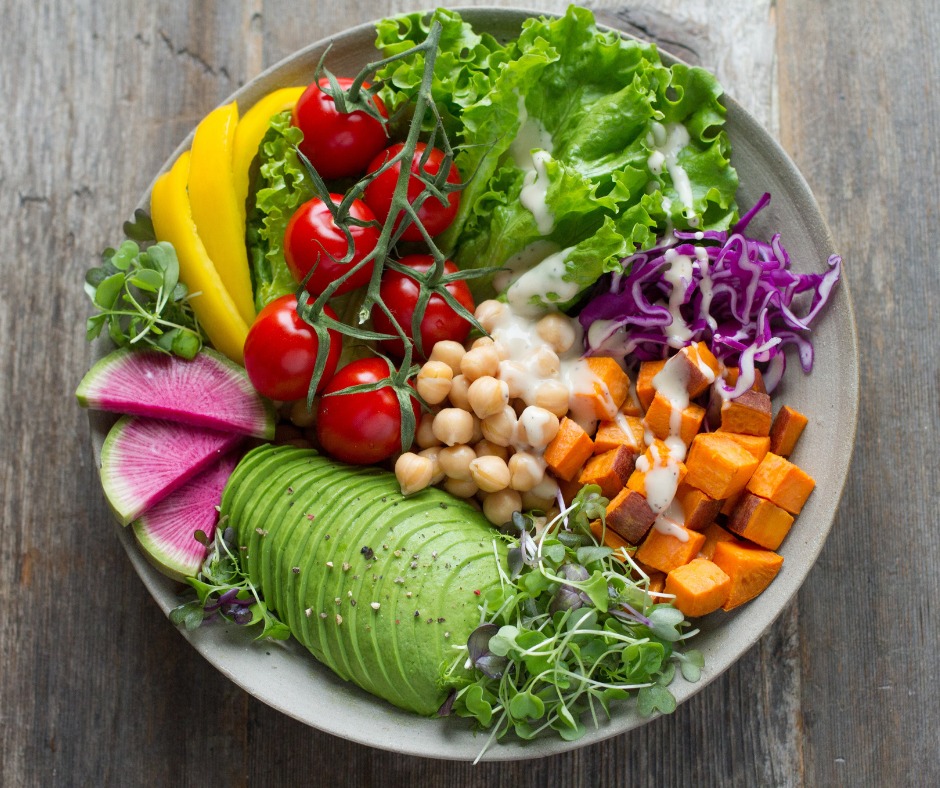
When it comes to nutrition nothing is as straightforward as I’d like it to be.
We know that eating more fruits and vegetables can be better for our health than following things like the Standard America Diet. Unfortunately adopting things like the Mediterranean diet can present us with a problem. You see as we start to include more fruit and vegetables in our diet we can unwittingly fall into a trap. Namely that the increase in fruit and vegetables can come with an increase in pesticides.
Researchers from the University of Oslo recently published a cautionary study. They noted that people who ate a lot of foods that would be common in a Mediterranean diet from sources that are raised in the ‘conventional’ way, meaning farmed using pesticides, had 3 times as many environmental contaminants in their bodies when compared to eating foods that were cultivated organically. (1)
The contaminants that they found are known to disrupt hormones in humans, weaken our immune systems and potentially have a negative effect on fertility and the growth of our children.
Interestingly, the researchers weren’t condemning the Mediterranean diet, they noted that the benefits of consuming fruits and plants with pesticides might be better than just following the Standard American Diet (SAD).
For me this study is interesting. It doesn’t tell us anything we don’t know. Commercially grown, non-organic food has pesticides on it. Pesticides aren’t good for us. But what I find interesting is the official stance of the researchers. They are not recommending any changes to nutritional guidelines and think that a diet with chemicals that are known to be bad for us might be, in the long run, might be\ just as good for us as eating a SAD diet.
This seems crazy to me. To knowingly eat poisons because the benefits of eating the plants might be the same as eating the standard American diet. Why take the risk when the solution is already available…eat organic where possible.
The British Charity, Pesticide Action Network has also done some research into this area. They have found 122 different pesticides in the 12 most polluted products, something they call the ‘dirty dozen’. They found that 61% of the pesticides are classed as extremely hazardous to health. The research revealed that citrus fruits are usually the most affected but some fruits like grapes will have a ‘cocktail’ of chemicals on them.
The PAN dirty dozen is as follows:
A similar group in the US called the Environmental Working Group (ewg.org) has also produced a “dirty dozen” list.
There are some differences between the two lists but the core ‘offenders’ are consistent.
PAN aims to educate the public about the state of pesticides in the food chain and helpfully provides information on the pesticides:
Neonicotinoids (insecticides) most of which are banned in the UK but still turn up in the food.
Imazalil, a carcinogen, reproductive and developmental toxin is used post-harvest fungicide used mainly on citrus fruits.
2,4-D is an agricultural weedkiller and endocrine disruptor.
Chlorpyrifos is an insecticide that is banned in the EU but is commonly used in other countries and will appear on imported foods. It has been linked with slower motor development in children and behavioural problems.
Difenconazole is a fungicide and appears on most of the dirty dozen. It is suspected of being a human carcinogen and a reproductive and developmental toxin. This means that it may reduce sperm count in males and increase miscarriages in females.
Interestingly glyphosate a herbicide that is used to artificially dry crops was labeled safe for human consumption by the FDA in America because the mechanism it uses to kill the bugs doesn’t harm human cells. At first, glance that sounds great. However, the mechanism does harm bacteria…and what percentage of the cells inside our body are bacteria? 50% yup – A 2016 study in PLOS Biology points out that the ratio of human cells to bacterial cells in the body is 1:1 (when excluding non-nucleated red blood cells). (2)
What can we do about this?
Firstly, buy organic where possible. The common ‘refrain’ I hear from this is that people can’t afford it. Yes, organic food is more expensive and that is why we can use lists like the ‘dirty dozen’ to inform our choices. Do we need organic bananas? Well from a pesticide point of view they are not on the naughty list. If you love eating grapefruit or kale every day consider looking for the organic option. If that isn’t possible then washing the food can be helpful in removing some of the surface toxins and any dirt that could contain chemicals.
However, most of the pesticides mentioned are systemic, meaning they go into all the cells of the plant.
For me, I try to prioritize good food when I can. I’ve mentioned how I used to know the farmers whom I bought meat from in Canada. I’ve tried to do the same thing in Nicaragua. I avoid the big chains and have made friends with two small producers and pay them directly for meat and vegetables. I enjoy my interactions with these small, entrepreneurial businesses.
But most of us don’t prioritize our food anymore. We want it cheap and we want more of it. The Institute for Fiscal Studies produced an interesting document comparing spending habits in the 1970s with the 2010s (3).
They noted that in the 1970s people would spend about 25% of their income on food, and in the 2010s people spent about 13% on food. By contrast, the spending on leisure services has doubled! These show where our priorities lie.
Helpfully, the Environmental Working Group has published a list called the “clean fifteen’, which is essentially what it sounds like, 15 foods that don’t have as many chemicals.
I don’t think you should be disheartened by reading this. I think forewarned is forearmed. You can now be proactive in protecting your health and the health of your family from these somewhat hidden toxins.
Sometimes I think it would be easier to bury my head in the sand and not be concerned about what I eat. But then I think about how we can have one of the biggest positive changes in our health by understanding more about what we eat. My father died of liver cancer when he was 65. I have no idea why he got liver cancer, he probably didn’t either but when I think back to what he ate the years of microwave meals in a plastic container didn’t help, the slice of lemon in every gin and tonic releasing pesticides into his drink and the general lack of knowledge about where environmental toxins come from meant that he was, in my eyes, more likely to get cancer than I will be.
1. Rempelos, L., et al. (2021) Diet and food type affect urinary pesticide residue excretion profiles in healthy individuals: results of a randomized controlled dietary intervention trial. The American Journal of Clinical Nutrition. doi.org/10.1093/ajcn/nqab308.
2. https://www.ncbi.nlm.nih.gov/pmc/articles/PMC4991899/
3. https://ifs.org.uk/bns/bn128.pdf

Over the last 10 years Ed has been building a YouTube library to help people manage their own pain or movement limitations and increase performance through exercise. He regularly adds videos so be sure to subscribe and visit regularly


"Oh My Gosh- I am ALREADY feeling relief after a few days! I used to wake up 2-3 times a night with shooting pain that anti inflammatories couldn't touch. Now I have been waking up just because I want to notice what it feels like to lay in bed pain free- THANK YOU!."

"When I first started with your program I was experience a lot of pain. Walking was difficult. I had to stop and catch my breath every few minutes and lean against a wall for support. Now when I walk with my husband we go for over an hour. I never had to sit down and stop...and, hardly any pain!!! 😊😊 I can’t thank you enough."
Frustrated that you aren't recovering fast enough?
Discover how to heal from illness and injury using movement, food and lifestyle.
Leave a Reply